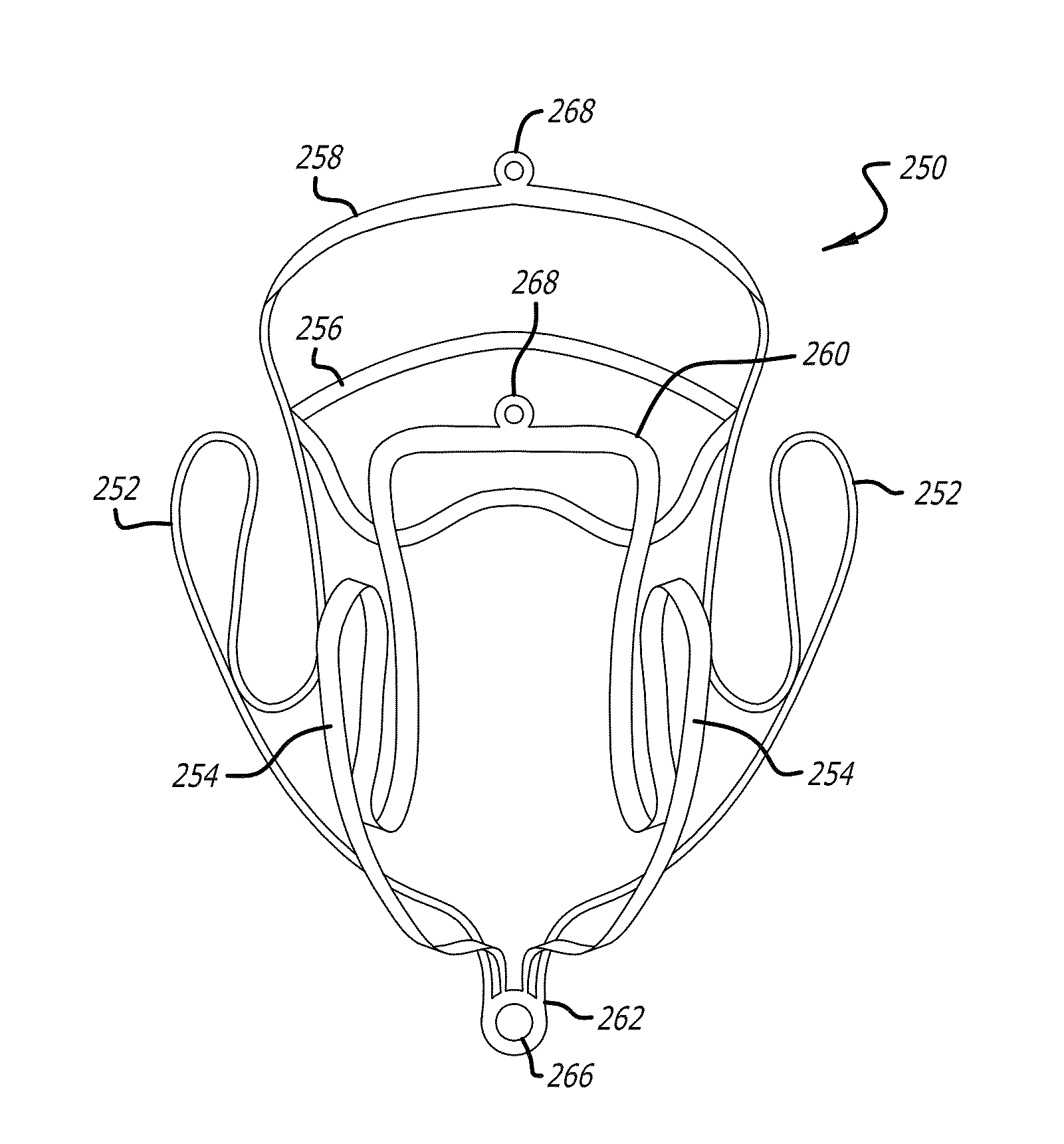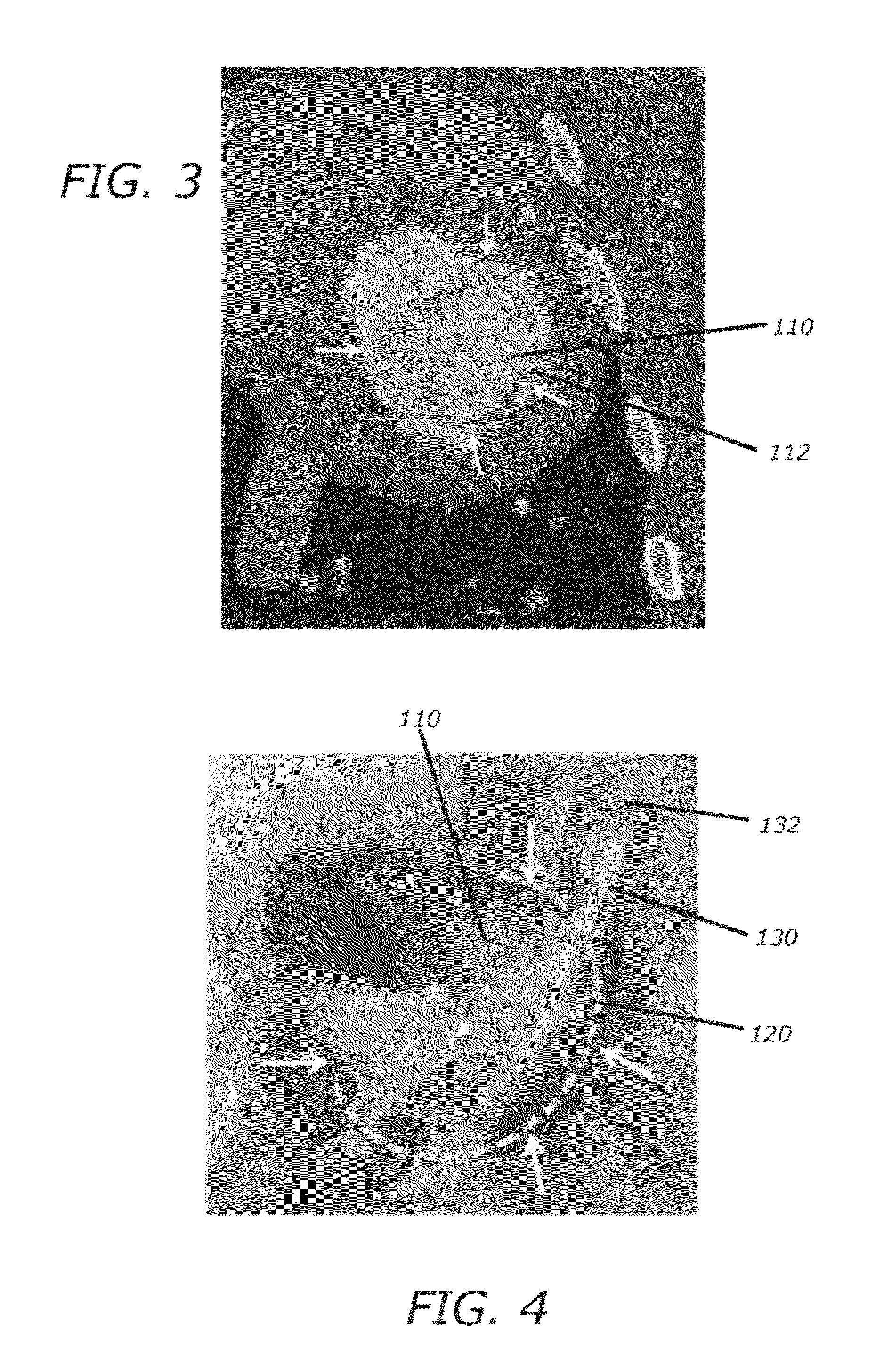Methods and systems for heart valve therapy
a technology of heart valve and interventional system, applied in the field of heart valve interventional system and methods, can solve the problems of complex system, negative physiologic effect of atrial fibrillation, disassembly and assembly of stents, etc., and achieve the effects of improving lv geometry, reliable, repeatable and convenient to perform
- Summary
- Abstract
- Description
- Claims
- Application Information
AI Technical Summary
Benefits of technology
Problems solved by technology
Method used
Image
Examples
Embodiment Construction
[0117]Referring now to the drawings, which are provided by way of background and example, and not limitation, the present disclosure relates to medical interventional procedures and devices. In various aspects, heart valve therapy is addressed and in particular, mitral valve replacement approaches are presented.
[0118]Overall, the present disclosure describes a system including a platform anchor, valve, and delivery technology that allows therapeutic flexibility (mitral replacement with either tissue or mechanical valves), implantation flexibility via either fully percutaneous or minimally invasive (trans-apical, trans-atrial) procedures, minimized delivery complexity to allow a simple to perform procedure, and a patient population that is not restricted by the underlying pathology.
[0119]A mitral valve replacement system according to the present disclosure includes one or more of an anchor element, sealing structure, and a valve element, and utilizes orientation tools as well as an a...
PUM
 Login to View More
Login to View More Abstract
Description
Claims
Application Information
 Login to View More
Login to View More - R&D
- Intellectual Property
- Life Sciences
- Materials
- Tech Scout
- Unparalleled Data Quality
- Higher Quality Content
- 60% Fewer Hallucinations
Browse by: Latest US Patents, China's latest patents, Technical Efficacy Thesaurus, Application Domain, Technology Topic, Popular Technical Reports.
© 2025 PatSnap. All rights reserved.Legal|Privacy policy|Modern Slavery Act Transparency Statement|Sitemap|About US| Contact US: help@patsnap.com



